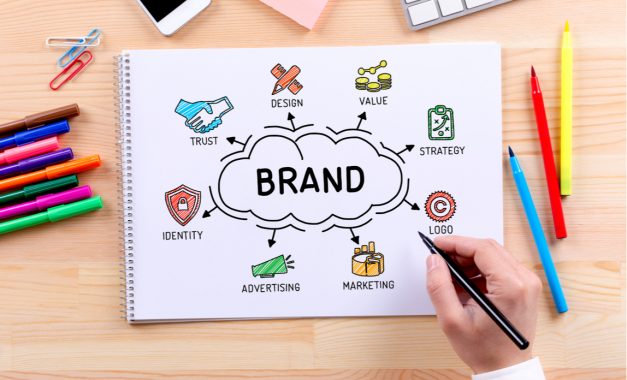Branded eCommerce & Dropshipping: Ultimate Guide for Online Retailers
William Shakespeare once wrote: What’s in a name? According to market research and anecdotal evidence, a lot! This is especially true when it comes to Ecommerce and online retail. That’s why successful companies spend so much on their advertising – they want consumers to remember their brand and products.
When it comes to hooking in online shoppers, brands are everything. This is where branded dropshipping comes into play. If a consumer has a positive experience with a brand, either a product or your store, then they’re much more likely to become a regular customer.
As a result, branded dropshipping is an excellent way to generate wider profit margins and customer loyalty, although there are certain considerations to take into account.
In this post, we’ll go over the types of branded dropshipping, the benefits, and how to build an effective store brand.
- What Is Branded Dropshipping?
- What Are The Benefits Of Branded Dropshipping?
- Should I Use Private Label Or White-Label Dropshipping?
- How Do I Choose Which Brand-Name Products To Sell?
- Should I Choose Established Or Emerging Brands?
- How Do I Build A Brand For My Dropshipping Store?
- The Numbers Don’t Lie: Brands Are Important To Consumers
- Choose GreenDropShip As Your Branded Dropshipping Supplier!
What Is Branded Dropshipping?

Before we dive into branded dropshipping and what it means, let’s just take a quick moment and establish what a brand is.
A brand is an identity of a given company, store, and/or product, usually established by the look and feel of all materials that the consumer comes in contact with. This includes the name, language, design, logo, and layout of these materials.
In other words, the brand is the concept, idea, or perception that the consumer has of the company, store, and/or product. The importance of having a strong, recognizable, and trustworthy brand can’t be overstated – this will help you differentiate yourself from all your competitors.
So what do we mean when we say branded dropshipping? Obviously, it’s a type of dropshipping that has to do with brands, but this is where things get a little tricky since that phrase can actually refer to a few concepts:
- Dropshipping brand-name products. Many retailers choose to sell highly recognizable and trusted brand-name products instead of cheaper, knockoff goods that usually come from Chinese suppliers.
- Building a brand for your dropshipping store. This is the process of creating an identity for your online store via product selection, design, layout, logo, tone, marketing, and language.
- Adding your brand name to products that you sell. You can order generic, unnamed products and then add your brand. There are two ways to do this: private label or white-label dropshipping.
Although these are distinct, they are somewhat related, especially numbers 1 and 2. In this post, we’ll be going over all three types of branded dropshipping.
Before we continue, let’s clear something up really quick: all the elements we’ll be discussing like your logo and design are not your brand. Instead, your brand is the perception that shoppers have and their perception of your products or store.
Additionally, branding is the process of building your brand, and brand identity is the tangible expression of your brand.
Ready to start selling online?

What Are The Benefits Of Branded Dropshipping?
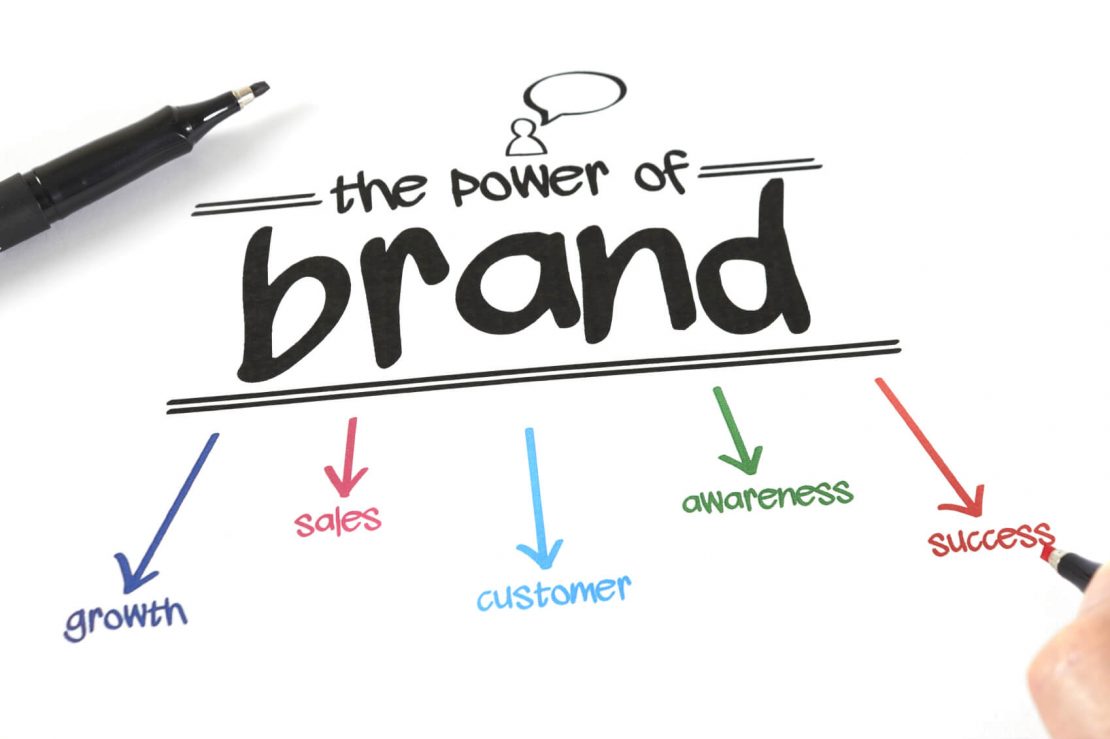
Branded dropshipping has plenty of benefits. For example, it will:
- Provide peace of mind by dropshipping brand-name products that consumers know and trust, prompting them to make that first purchase.
- Make online shopping less stressful by curating your product selection and keeping consumers from getting overwhelmed with choices.
- Increase value by offering recognizable brands and creating a trustworthy store identity, thereby driving sales and charge premium prices.
- Decrease returns and refunds because the consumer knows the brand and they’ll be less likely to make returns or ask for refunds.
- Define your store identity – if the consumer already has a relationship with a given brand, they’ll know what differentiates the products.
- Make consumers feel safe by offering them what they already know. Spending money is a form of risk-taking and people generally avoid risk.
- Form personal relationships with consumers by creating a brand experience that’s more personalized and less anonymous than at larger stores.
- Make shopping a shared experience since loyal customers are more likely to share positive experiences, creating a sense of community and connection.
- Turn one-time visitors into regular customers – acquiring new customers is approximately 5 times more expensive than retaining an existing customer.
- Gain an edge over your competition by offering brands that customers want. That’ll help you stand out in a crowded marketplace!
- Impact brand perception – in 2016, 68% of online shoppers reported that branded packaging makes the brand seem more upscale (versus 60% in 2015).
As you can see, most of these have to do with dropshipping brand-name products or building a brand for your store. In the next section, we’ll talk a little about private label and white label dropshipping and how that fits into the overall scheme of branding dropshipping.
Should I Use Private Label Or White-Label Dropshipping?
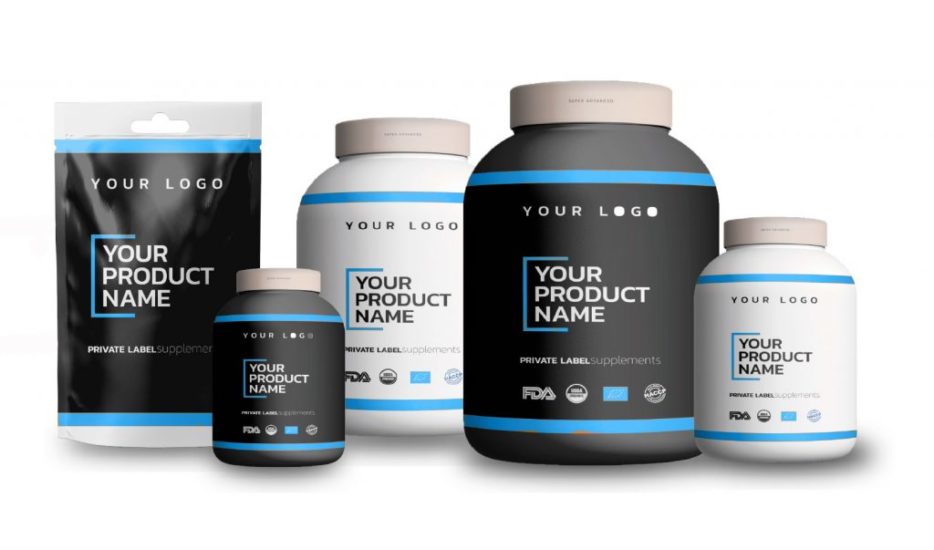
Let’s take a moment to define each of these forms of branded dropshipping:
- Private label dropshipping. A product is manufactured exclusively for one retailer who then sells it under their own brand.
- White-label dropshipping. A generic product is sold to multiple retailers who then rebrand the product.
Each of these fulfills the same basic purpose: to make it seem like the retailer manufactured the product. You can create a recognizable and identifiable brand identity that’s instantly associated with your online store.
Additionally, these are generally less expensive than brand-name products. However, if they’re rebranded well, they become more appealing to consumers versus other “generic” brands.
Since a private label product is exclusive to you, you’ll have much more control over the precise branding of those products.
With white-label dropshipping, it will be the supplier who creates the container, label, and packaging of the product based on your specifications and design. This means that you’ll have to settle on what they can produce for you.
However, with both of these models, you usually have to deal in minimum order quantities (MOQs), so you might end up with unsold surplus if you fail to properly predict consumer demand. With conventional dropshipping, you order only as much as the customer orders.
For most retailers, simply choosing the right brand-name products and building a strong brand identity for your store is enough to create a profitable dropshipping venture. While it’s true that private label or white-label dropshipping lets you control your brand identity, it does negate some of the benefits of dropshipping.
RELATED ARTICLE: White Label vs Private Label Dropshipping: What’s Better?
How Do I Choose Which Brand-Name Products To Sell?
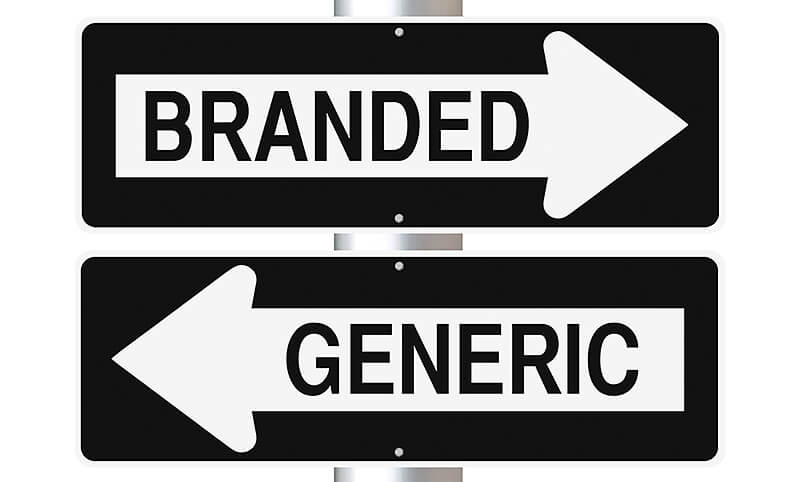
Let’s say that you’ve decided that private label or white-label dropshipping just isn’t for you. Instead, you want to dropship brand-name products. That’s a great idea! If you play your cards right, you can earn some serious coin.
Now let’s say that you’ve found your dropshipping supplier and identified your niche, so you’re ready to stock your online store. But which brand-name products do you choose? There are so many options, so what should you do?
- Do product research! Take the time to understand the market and your target audience.
- Find what’s trending. You can identify niches, brands, or specific products that are trending online.
- Choose brands with name recognition. Consumers need to recognize the brands for this strategy to work. The more recognizable, the better!
- Pick trustworthy products. The consumer needs to both recognize and trust the brands that you’re selling.
- Avoid market saturation. The risk of using recognizable brands is that sometimes they’re plateauing or – even worse – plummeting.
- Stay lightweight and small. Keeping your shipping costs down! The ideal product can fit in a shoebox and weighs under 4.4 pounds (2 kg).
- Avoid only selling seasonal products. The most profitable products are in demand all year round, although seasonal trends can be temporarily lucrative.
- Choose products that consumers buy regularly. Sell items like vitamins, supplements, groceries, or beauty supplies to ensure a steady flow of sales.
- Find your ideal price range. Each item will have a sweet spot. If you’re selling cheaper products (under $15), then your sales volume should be high.
In general, this is the best way to start dropshipping branded products.
RELATED ARTICLES:
- How To Do Product Research For Your Dropshipping Store
- How To Use Google Trends For Dropshipping
- Top Dropshipping Christmas Products You Need To Sell
- Here Comes The Sun: Hottest Summer Products To Dropship & Sell Online!
- Hot Dropshipping Trends: Summer 2022
- Best Items To Dropship In 2023: Over 125 Of The Hottest Products!
Should I Choose Established Or Emerging Brands?

As you develop your dropshipping store and choose your inventory to sell, you’ll encounter all different kinds of brands. Of course, some of these will be more recognizable and established brands while others will be new and emerging brands.
Taking that fact into consideration, you’re now presented with a few crucial questions:
- What types of brands do I add to my online store?
- Do I choose established, well-known, and recognizable brands?
- Or do I choose new and emerging brands?
- What are the pros and cons of each?
At some point in time, while you’re building your Ecommerce store, you’ll need to answer these questions.
1) Established & recognizable brands
At first glance, it might seem obvious: choose established brands! They have much higher brand recognition and more online shoppers will know about them. Plus, marketing these brands is considerably easier since the consumer is already familiar with them and likely has an opinion.
While that’s definitely a big plus, there are some potential drawbacks. Choosing established brands means that – in order to stay competitive – you’ll have to:
- Offer the lowest prices possible versus your competition
- Keep shipping times and rates lower than your competitors
Unfortunately, it’s extremely difficult to compete with online retail giants like Amazon or Walmart on prices and shipping times. It’s theoretically possible part of the time, but it’s effectively impossible all of the time.
RELATED ARTICLE: How To Handle Shipping Times When Dropshipping
Amazon and Walmart will usually have lower prices and lower shipping times/rates for a greater selection of products than you. You might identify a product or brand where you can beat them from time to time, but, in the big picture, they’ll win out.
Plus, even if you choose the “perfect” dropshipping supplier, especially one that’s based in the US instead of China, Amazon and Walmart will on average be at least a little cheaper and a little faster.
RELATED ARTICLE: Best Made In USA Wholesale Dropshippers
Finally, the biggest con is that established and recognizable brands frequently reach market saturation. When this happens, both the market demand and product prices plummet, making it effectively impossible to turn a healthy and consistent profit.
2) New & emerging brands

To avoid these drawbacks, you can always pick new and emerging brands to add to your online store. Of course, their brand recognition will be lower than established brands, but that doesn’t necessarily mean that you can’t make them just as profitable.
It all comes down to your Ecommerce marketing strategies. If you pick the right products from the most promising emerging brands, market them properly, offer a positive user experience (UX), and build a great online store, then you can definitely turn a consistent profit.
Plus, there are other significant benefits to choosing new and emerging brands. These include:
- Avoiding market saturation to turn a healthy and consistent profit.
- Engaging customers who are curious and searching for new brands.
- Building trust and authority by becoming the de facto information source.
- Operating at the forefront of new trends in online retail.
- Keeping clear of direct competition with retail giants like Amazon.
- Creating the new brand’s voice and identity in your marketing content.
Since you’ll be avoiding brands that have hit market saturation, the opportunities with new brands really are limitless. You’ll also have a more active role in conveying the brand’s voice, identity, function, and benefits to both new and returning customers.
That being said, there are plenty of curious consumers who are willing to try new brands and products if you market them correctly.
Finally, let’s not forget that the dropshipping model still protects you from many of the risks that come with a bulk inventory-holding retail model.
For instance, let’s say you start selling beauty products from a new and emerging brand that’s not super well-known. With dropshipping, you’ll never order too much wholesale inventory and get stuck with an unsold surplus.
RELATED ARTICLES:
- 5 Killer Product Description Templates That Sell
- Top Email Marketing Strategies For Dropshipping
- Your Complete Marketing Guide For Dropshipping
3) Innovators choose new & emerging brands

Ultimately, each option has its own benefits and drawbacks, depending on what you’re looking for.
However, we can say one thing for sure: innovators are definitely more likely to choose new and emerging brands! If you’re an innovator, it’s more exciting and fulfilling to find fresh brands than to choose more conventional and “safer” options.
However, dropshipping still insulates you from an excessive amount of risk, even if you’re trying to sell new and untested brands. You get the exhilaration and excitement of the search for new brands while avoiding a ton of risk.
Most innovators are turned off by simple, out-of-the-box solutions that are presented as affordable and convenient revenue generators. They’re just naturally skeptical of anything that’s “too good to be true” and are wary of anything that could be interpreted as a “get-rich-quick-scheme”.
In other words, you can stick to the same old brands, but it’s less rewarding. Plus, if you’re the retailer who finds that hot new brand that explodes in popularity, then you’ll take the lion’s share of the sales until other stores catch up.
With new and emerging brands, the rewards are greater. Plus, if you put in the time and commitment, then you can build a highly profitable, interesting, and exciting business. It’s a kind of “bet big, win big” scenario.
Finally, new and emerging brands are also appealing to achievers. They “act as anchors of the status quo”, meaning once they find a brand that’s got lots of promise, it’ll very likely catch on with consumers. They’re basically tastemakers or trendsetters.
Once that happens, then you’re talking about a brand that might generate tons of sales as online shoppers flock to buy its products. In that case, you definitely want to be ready to offer them what they want!
How Do I Build A Brand For My Dropshipping Store?
As we mentioned above, creating a strong and identifiable brand identity for your dropshipping store is an effective form of branded dropshipping.
That being said, let’s go over the basic steps you need to follow:
1) Choose a niche

A dropshipping niche is a smaller subsection of the wider retail market. For instance, you can have the general category of Groceries. Within that wide category, you can choose a niche like Vegan Groceries. Or, if you want to specialize even further, you can choose a smaller niche like Vegan Snacks.
Why is a niche so important to your brand? Because it allows you to curate your product selection to fit your brand identity.
Let’s say you want your brand identity to be gourmet or specialty. To convey this identity, you should only choose products from this niche. If you want, you can get even more detailed and choose a niche like Italian Espresso or Belgian Dark Chocolate, both of which fall under the wider category.
Let’s look at some of the other benefits of choosing a dropshipping niche:
- You can focus on a part of the market with less competition.
- You can easily and efficiently build trust and brand recognition with potential customers.
- Consumers will see you as an expert and be willing to pay premium prices, especially if you have a well-curated selection.
- If you choose a niche that you love, it’ll give your dropshipping store a more personal touch.
- A more curated or specialized inventory can also be less overwhelming for consumers.
Ultimately, choosing a niche is extremely important for dropshipping – it means focusing on a narrower chunk of the retail market that has less competition and greater potential for sales. You’ll be carving out your own little chunk of the retail market so that you can compete with retail giants like Amazon or Walmart.
RELATED ARTICLES:
- How To Find The Best Dropshipping Niches
- Top 8 Products To Dropship In The Fitness Niche
- How To Dropship In The Baby Products Niche
2) Pick a store name

Your store name will likely be the first thing that your potential customers will notice, so you need to choose one that’s catchy, memorable, and looks good on your page. It also needs to be consistent with your brand identity and store design.
To pick the right name, you need to ask yourself: What do I want the customer’s first impression to be? How do I get their attention ASAP?
Just choosing something like My Food Store or Essential Oils Market is boring and forgettable. Make it snappy and make it shine! Grab the attention of online shoppers while still conveying some information about your online store.
To get started, you can use these store name generators to come up with some name ideas:
- Shopify’s Business Name Generator
- Oberlo’s Business Name Generator
- BNG’s Business Name Generator
- Truic’s Business Name Generator
Both the BNG and Truic tools have generators that are specific to various niches and industries. For instance, BNG offers tools for stores in the Beauty, Baked Goods/Cake, Clothing/Apparel, or Food/Grocery retail spaces. Additionally, Truic offers name generator tools for Wine, Groceries, Jewelry, Beauty Supplies, Clothing, or Soap.
Make sure you also choose your words wisely and carefully. For example, take a look at this list for some ideas:
- Market/Emporium – instead of just saying “store”
- Global/Worldwide – if you’re going for an international market
- Gourmet/Premium/Specialty – if you’re offering fancier products
- Organic/Natural/Earth – for eco-friendly or healthier products
- Yummy/Delicious/Fresh – if you’re selling groceries
- Delivery/To Your Door – if you want to emphasize speed and convenience
Finally, you can also use words or phrases from other languages, especially if you’re focusing on gourmet products or ethnic foods. In fact, you could also just say things like Delilah’s French Bakery or A Taste of Italy to instantly convey some classiness to your store.
3) Design a logo

For many shoppers, their experience interacting with your brand will be based on the visuals you choose for your store. Of these visuals, your logo is arguably the most important.
It’s one of the fastest, easiest, and most effective ways to convey your brand identity. Customers figure out how they feel about a brand or store very quickly; for instance, it only takes them 10 seconds to form a first impression.
A great logo should always work in combination with the name – in this case, your store name. For example, if you’re selling candy and your store name is Crazy Candy Factory, then you shouldn’t pick an elegant, minimalist logo – that would be confusing to the consumer.
If you’re selling candy, the logo should be something colorful, dynamic, and fun. That would be a great way to integrate the logo with your store name to create a consistent and recognizable brand identity.
However, don’t forget that your store design is also part of your brand identity. This includes things like color, font, layout, and overall design. Again, don’t create a wacky logo that you then add to a sleek, minimalist page layout. That would also seem contradictory and likely confuse the consumer. And in retail, confusion usually equals no sale.
A good logo should be memorable and dynamic. It also needs to differentiate you from your competition while fostering brand loyalty. How’s that possible? Because it should be meaningful – your businesses’ core values, purpose, mission, and vision should be communicated.
The logo is part of the user experience (UX) – this is a key concept in branding. You’re selling an idea, experience, or feeling.
Here are some useful tools you can use to design your logo:
Finally, an interesting statistic is that 33% of the top 100 brands use the color blue in their logo. Keep that in mind when designing!
4) Design your store

Good store design is 100% necessary for a recognizable, positive, and profitable brand identity. You absolutely need it!
Much like your store name and logo, your store design is closely linked to the concept of user experience (UX). This is how a consumer subjectively experiences, perceives or interacts with a product or service, including your online store.
According to Forbes, good UX can increase conversion rates by a staggering 400%! This means that you need to avoid bad or confusing UX like the plague! The name of the game is always good UX and you’ll see tons of benefits, especially if you couple it with great design.
Plus, 94% of the time, a poor first impression of an online store is due to poor design. According to this study, the most common complaints were:
- Too complicated
- Cluttered/busy layout
- Poor navigation
- Boring page design
- Clashing colors
- Too many pop-up adverts
- Slow loading time
- Too much text
- Font too small
- Generic copy
For a comprehensive guide on good store design, check out our blog post The Ultimate Guide to Shopify Website Design. Although we wrote it specifically about Shopify, the lessons can be applied to really any online store.
If you want just the greatest hits from that blog post, make sure that you:
- Pick the right color – they tap directly into consumers’ emotions and instincts.
- Maintain this color scheme and make sure 3rd party additions also fit the aesthetic.
- Inject a little personality and remind consumers that there’s a person on the other end.
- Target consumers’ emotions and feelings since gut instinct affect purchasing behavior.
- Present a clear and concise unique selling proposition right on your landing page.
- Include your brand logo throughout the Shopify store and across all devices.
- Make your brand unique – it’s like that old saying: Just be yourself.
5) Find your voice & USP
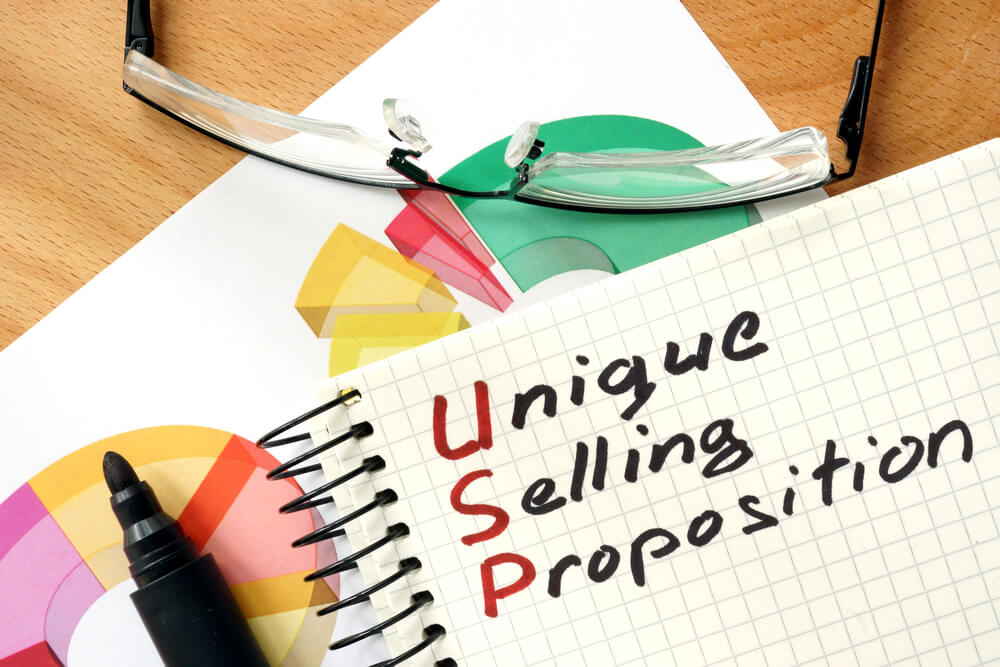
Another component of your brand identity is your voice. This is just a general, catch-all term referring to your company’s:
- Goals
- Mission statement
- Values
- Overall identity
- Tone
In other words, this is another piece of the puzzle in creating a positive experience and impression with consumers. As with every other aspect of your brand identity, it all needs to integrate together seamlessly.
In other words, if you’re selling luxury goods, then you need to give off a luxury vibe. By nature, your voice will be a little more formal. Make sure you don’t equate formal with stiff – no matter what you’re selling, your voice should always be dynamic and unique.
However, if your target demographic is younger or your goods are at a lower price point, then you can afford to have a voice that’s less formal and friendlier.
One great place where you can convey your brand’s voice is in product descriptions. These are a crucial part of your online store since customers will have to rely on them when choosing to make a purchase.
RELATED ARTICLE: 5 Killer Product Description Templates That Sell
Additionally, you also need to identify your unique selling proposition (USP). This is not a marketing offer, business practice, selling point, brand slogan, or generic stance on the marketplace.
Instead, your USP is more holistic than that – it’s a statement that embodies everything you do to stand apart from your competitors.
In other words, it’s how you approach running your online store. It determines your product selection, content, user experience (UX), and every other aspect of your brand that consumers interact with. It’s the experience and perception.
RELATED ARTICLE: How To Develop An eCommerce Unique Selling Proposition.
6) Keep your marketing on-brand

One of the greatest benefits of dropshipping is that you don’t have to worry about the hassles of inventory or shipping products. This frees up a lot of time and resources, making it easier to market your store.
The best tools that you can use for marketing are still Google Ads or Facebook Ads. While it does cost money to run ads on these platforms, and you do need a pretty solid understanding of your target audience, they can definitely pay off in the long run.
Plus, you can also use the following marketing strategies:
- Investing in video content for ad campaigns. Check out our post on How To Make Video Ads For Dropshipping.
- Using Facebook Custom Audiences. You can send targeted Facebook Ads to your email list.
- Installing Facebook Pixel. Improve your targeting by looking at performance data.
- Retargeting visitors on Facebook Ads. Most shoppers don’t buy anything on their first visit, but you can always get them on the next one!
- Investing in Instagram Ads. We’ve put together a whole guide on How To Create Instagram Ads That Convert.
- Sharing on social media. This has become the most powerful tool on the internet, so don’t neglect it.
- Starting a blog. This one’s free! It’s the easiest way to implement search engine optimization (SEO).
However, any and all marketing communications must always fit your brand! Let’s say you rely heavily on email marketing. That’s great! It can be incredibly useful. But, your website copy is more formal (since you sell gourmet goods) while your marketing copy is too informal or friendly. That’s a problem – there’s a fundamental inconsistency in your branding that you should avoid at all costs.
Of course, emails will probably be a little less formal, since you know that either: a) they’ve already expressed an interest in your store and provided their email or b) they’ve already bought something. Both of these mean that there’s some level of familiarity between you and the customer.
However, don’t let the voice of your company fall out of sync with the voice of your marketing communications. Keep it consistent!
RELATED ARTICLES:
The Numbers Don’t Lie: Brands Are Important To Consumers
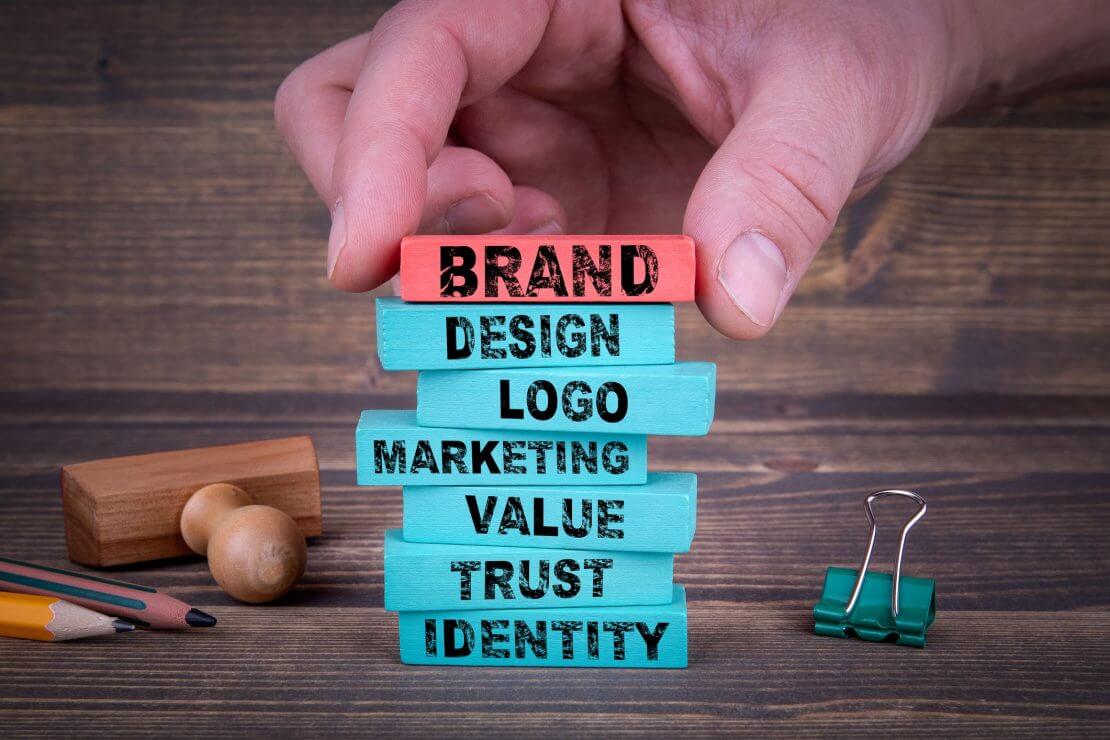
The giant UK retailer Onbuy conducted a customer survey that had some interesting conclusions:
- 71% of consumers stated that it was important that they recognize brands before they purchase a good.
- 52% of consumers said that brand name is the most important factor when choosing a product to buy.
As you can see, brand names are incredibly important. Dropshipping branded products will ensure that your potential customers are getting the specific products that they are looking for and that the market demand is met.
Why do consumers feel this way? Well, it’s important to note that there are two key concepts at play here:
- Brand awareness – Also known as brand recall, refers to the consumer’s level of awareness and ability to remember a specific brand.
- Brand loyalty – If a consumer has had enough positive experiences with a brand, they will become loyal customers.
As an online retailer, you want to be able to tap into both of these. To do so, however, you need to start working with brand-name wholesale dropshippers. If they are an approved wholesale vendor, then you can easily start dropshipping these highly desirable products and drive profits for your online store.
Additionally, offering brand-name products immediately grants your business an air of legitimacy that will draw in potential customers.
Choose GreenDropShip As Your Branded Dropshipping Supplier!
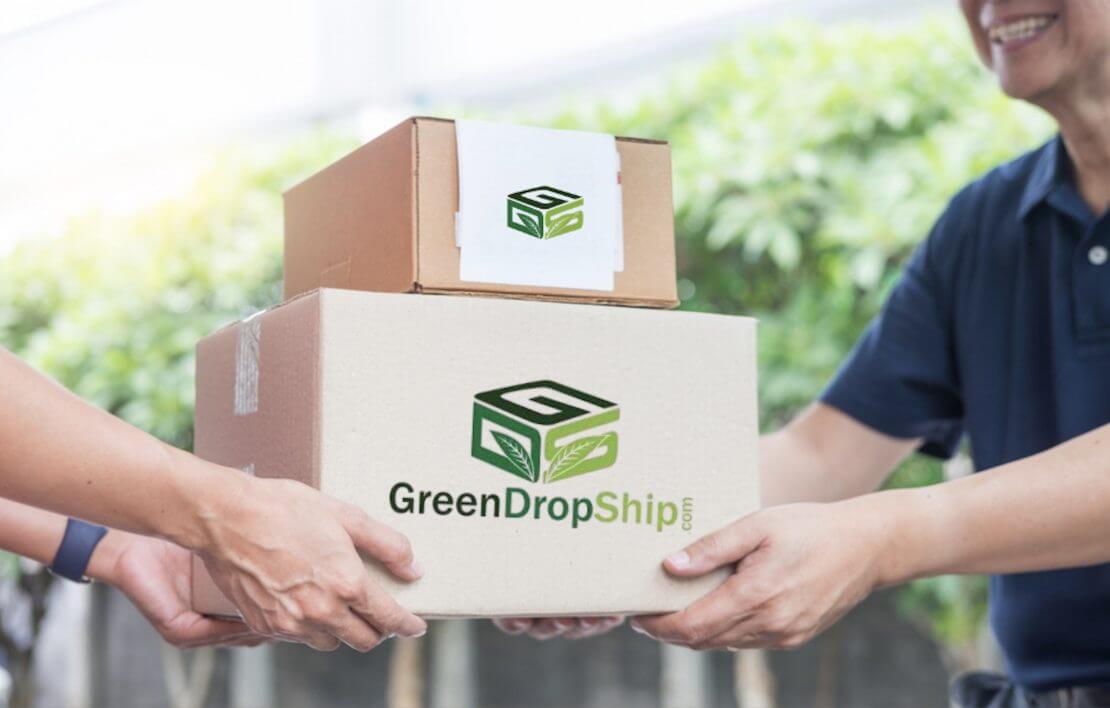
Your branded dropshipping supplier should always have:
- Knowledgeable sales and support representatives.
- Tools to help you track your inventory and sales.
- Be reliable, timely, and efficient in their shipping and packaging.
GreenDropShip meets every one of these criteria! We’re a US-based wholesaler and dropshipping supplier with thousands of natural and organic products. Most of these items are made in the USA and come from in-demand brands that consumers know and love.
We also have a huge selection of specialty, premium, and gourmet products in our inventory, including:
- Beverages like coffee, tea, kombucha, yerba mate, natural soda, and juices
- Organic sugar and natural sweeteners
- Dairy and plant-based milk
- Baking ingredients, including different types of flour
- Sauces, marinades, and dressings
- Spices and ingredients
- Vegan, vegetarian, and plant-based goods
- Vitamins and supplements
- Skincare, hair care, and beauty products
- Baby products
- Home products like detergents, soaps, and cleaning supplies
- Pet food, treats, and supplements
- Essential oils and aromatherapy
All these products come from trusted and recognizable brands!
Become a dropshipping member and we’ll store, pack, and ship your orders to your customers. We have multiple warehouses throughout the country, so our shipping times are always short and your customers won’t wait long.
We also function as a conventional wholesaler, so you can purchase products in bulk from us and we’ll ship them to you. This means that you’ll handle storing, packing, and shipping them to your customers.
We offer a Shopify dropshipping app that makes it easier than ever to add products to your store. If you’d rather not use the app, you can use our product feeds to easily dropship products on Shopify, WooCommerce, or Amazon/eBay.

